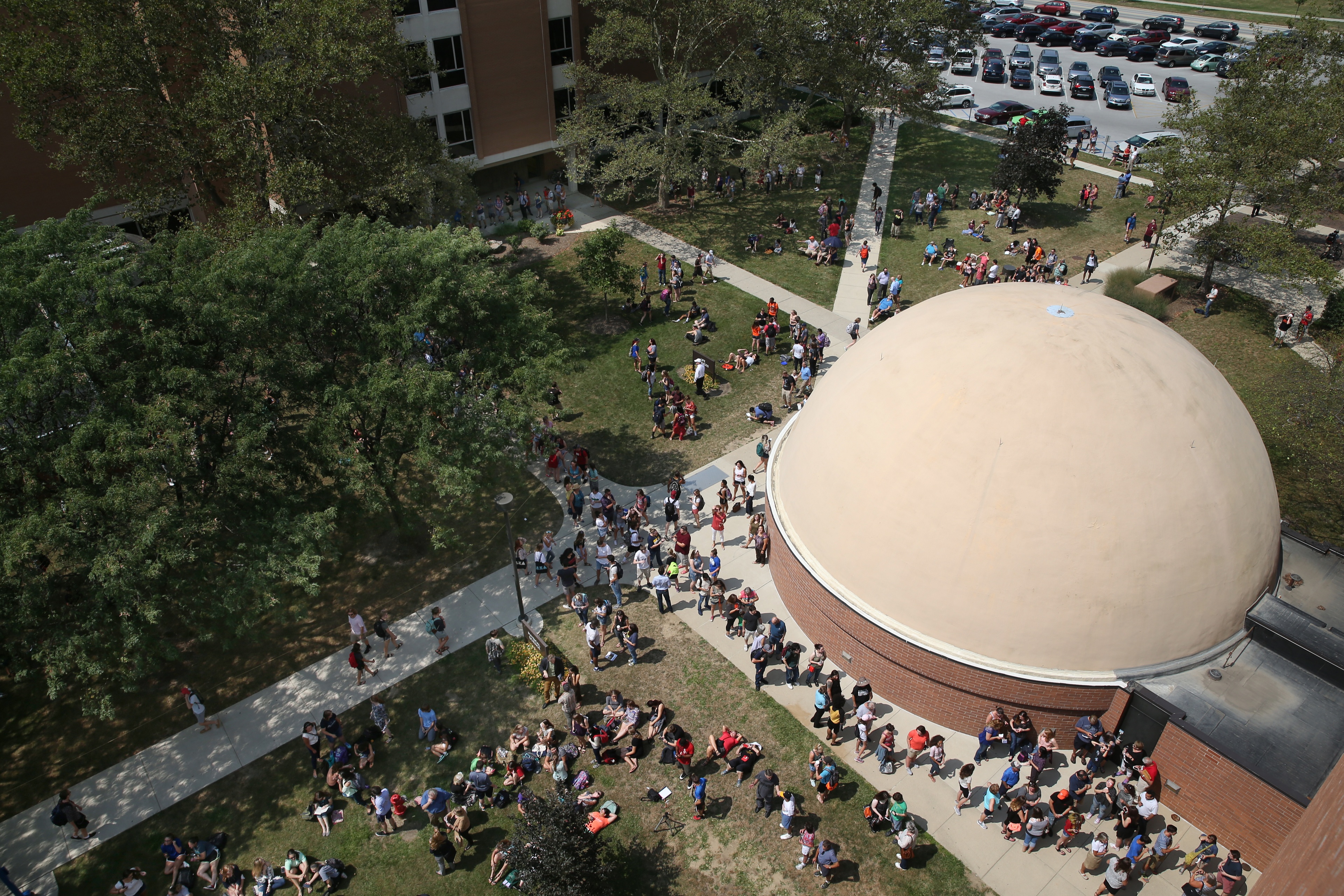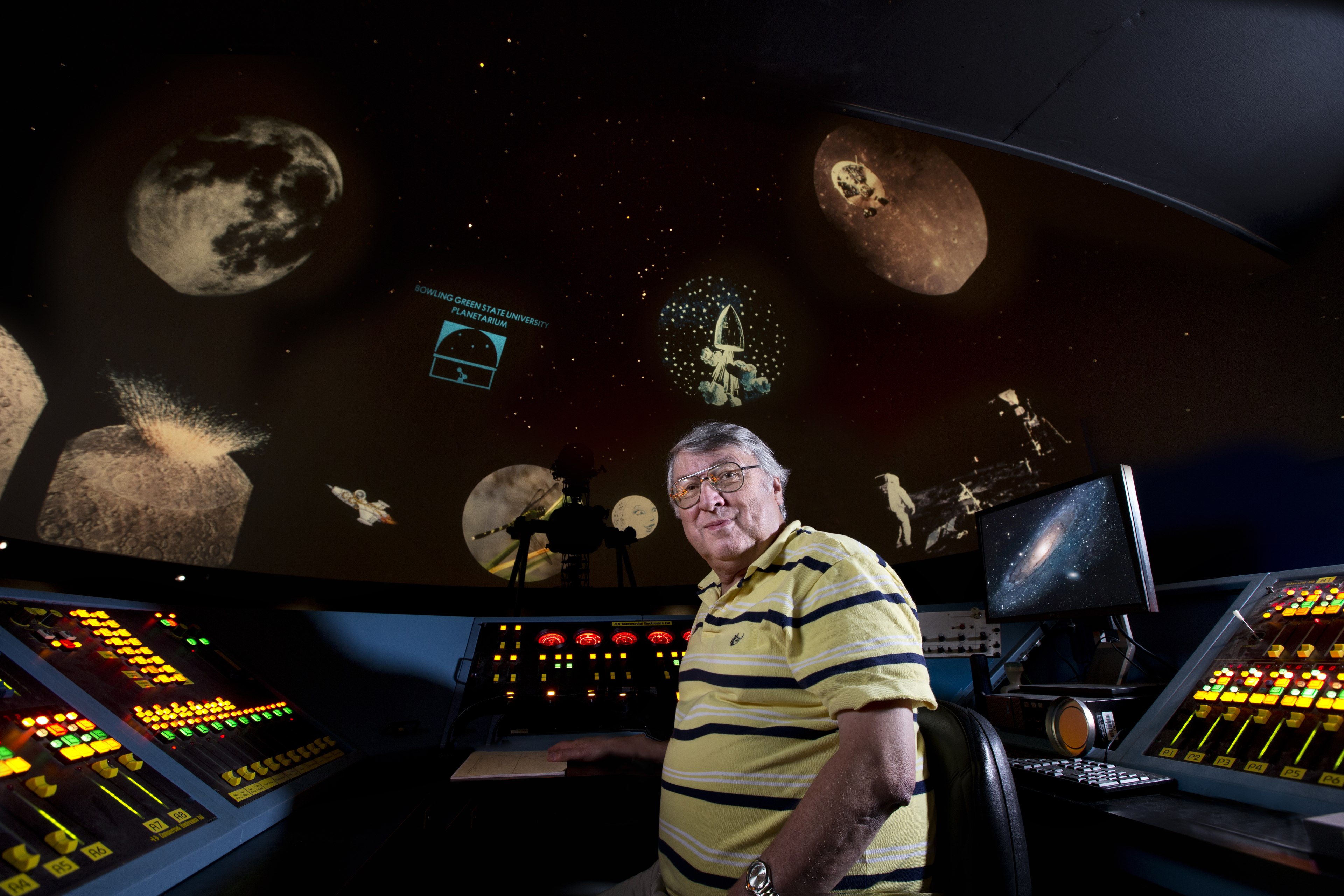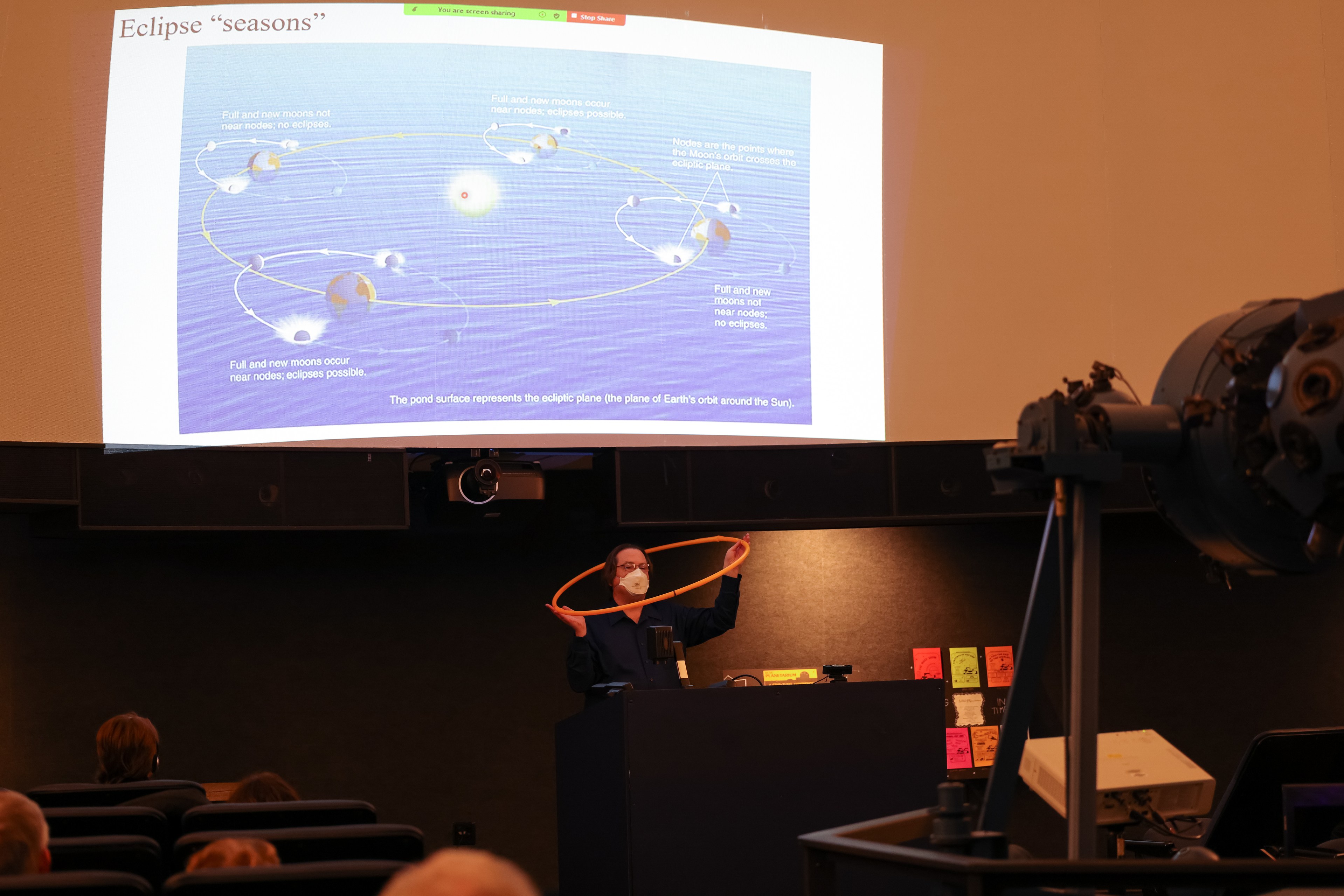
BGSU Planetarium shows the magic of the cosmos on campus
Estimated Reading Time: 3 minutes
The planetarium, the vision of the late Dr. Dale Smith, is celebrating its 40th year in 2024 with programs in tribute to the founder
By Nick Piotrowicz
At the heart of the Bowling Green State University campus, the magic of the cosmos is on display.
The planetarium, which is part of the Physical Sciences Building, makes learning astronomy fun, immersive and highly visual for learners of all age groups and backgrounds.
Dr. Andrew Layden, chair of the BGSU Department of Physics and Astronomy, said the planetarium brings astronomy directly to viewers in a memorable way, similar to seeing a film at theater.
“It’s great for seeing what constellations are visible at a certain time, what planets are up, where the moon is, watching a sped-up version of how objects rise, fall and move through the sky without having to wait all night for them to move,” Layden said. “The full-dome videos are basically movies that take place on the entire hemisphere that are similar to an IMAX film in a lot of ways.”
The planetarium was the vision of the late Dr. Dale Smith, who was the planetarium director from 1983 until his death in September, 2023.
Dr. Kate Dellenbusch stepped in as planetarium director for the spring 2024 semester to oversee its programming ahead of the April 8 total solar eclipse, during which Bowling Green will be in the path of totality.
As a tribute to Smith and in celebration of the planetarium’s lasting legacy, the planetarium will show digitized versions of the first two shows Smith played in 1984 and 1985.
The free, open-to-the-public shows will air at 6:30 p.m. on April 11, 18 and 25, and at 7:30 p.m. on April 14, 21 and 28.
“For basically 40 years, Dale was the planetarium,” Dellenbusch said. “He oversaw its final construction and its opening, and having the planetarium on campus offers the opportunity for the students and the community to come and learn about astronomy.”

The planetarium can recreate the view of the sky from anywhere — or any time — on Earth.
The planetarium played host to a speaker series on various eclipse-related topics, and during BGSU English professor Stephannie Gearhart’s talk, the planetarium was able to show an eclipse that happened during the life of William Shakespeare as part of the presentation.
“When we’re talking about the sky, we can do a full recreation at virtually any time or place on Earth,” Dellenbusch said. “When Dr. Gearhart talked about Shakespeare and eclipses during the speaker series, we were actually able to show an eclipse from Shakespeare’s time, from 1605, that he might have seen, and show how the view from London would have looked.”
The planetarium also can demonstrate accurately the scale of various items within the solar system. Dellenbusch said one of the most fun demonstrations is to project planets, then ask the gathered audience — which can range from school-aged kids to adults — to guess how big the sun actually is compared to the other planets.
The big reveal, when the sun fills the dome, always gets a big reaction, she said.
“We have a full-scale model of the sun and the planets that we project, so we name the planets as they come up, then ask how big the sun would be on the scale once you’ve seen Earth and Jupiter. Once we actually show it, that always gets ‘oohs’ and ‘ahhs,’” Dellenbusch said.
The planetarium is also home to astronomy and solar system classes, which provides an invaluable teaching tool for BGSU students.
Rather than simply listening to a lecture, Layden said students can experience astronomy or the solar system course material in real-time.
“When we’re teaching a solar system class, it’s particularly useful because we can show sky motions, the lunar phases, eclipses and the seasons, and we can simulate those so they are easier to see with the planetarium than with a flat screen or a book,” Layden said. “It’s a very dynamic sensory experience.”

Related Stories
Media Contact | Michael Bratton | mbratto@bgsu.edu | 419-372-6349
Updated: 04/10/2024 08:40AM




